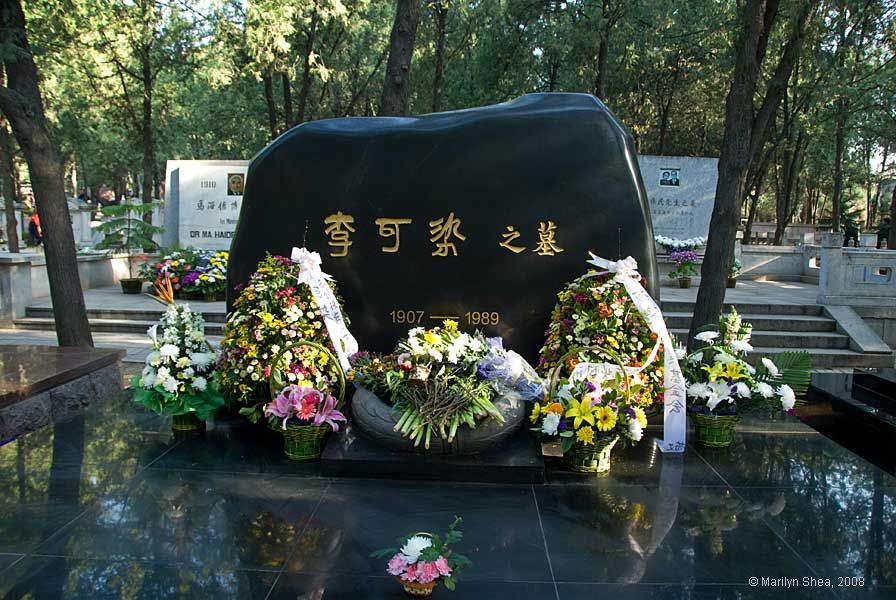 |
| Li Keran 李可染 (Lǐ Kěrǎn) was born March 26, 1907, Xuzhou, Jiangsu Province, and died December 5, 1989, in Beijing. He began studying painting and calligraphy as a teenager. In 1923 he entered the Shanghai Art College and then, after teaching for a time at home in Xuzhou, he went to the Hangzhou National Art College for post-graduate study in 1929.
Li Keran studied under teachers who sought to incorporate aspects of western painting with those of traditional Chinese methods and perspectives. André Claoudit, his teacher at Hangzhou, was influential as was Kang Youwei who had mentored him in Shanghai. He joined the Yiba Art Society in 1932. This was a radical leftist organization and he was expelled from school and returned home once again. During the Anti-Japanese War he traveled with the Nationalist military propaganda department over much of China painting anti-Japanese posters. 1943 finds him lecturing at the Beijing National Art College. It was one of the first colleges in China and the first art college. It was founded in 1918 by Cai Yuanpei and was very prestigious. How he ended up there during the occupation of Beijing by the Japanese is probably an interesting story, but I don't know it. The Japanese troops in China didn't formally surrender until Sept. 9, 1945. In 1946, Xu Beihong invited Li to join the faculty of the college. He joined a faculty of luminaries including Qi Baishi and Huang Binhong. He continued there until retirement. He became vice chairman of the Chinese Artists Association in 1979 and the president of the Research Institute of Chinese Painting in 1982. In China, these positions are not just an indication of organizational skill but of artistic merit. They are high honors. Xu Beihong was particularly noted for his landscapes with water buffalo and for his ink wash figures. He was able to put liveliness and emotion into his subjects, giving the viewer the impression that the figures would gallop or walk right out the painting. His human figures had expression and emotion, not only in the face but in the total attitude of their bodies. His landscapes followed the styles of Chinese masters such as the four Wangs in his early years. Later, he often explored a bolder red, black and white mountain scape which has become associated with him. If you type his name into Google Images you will be able to see photographs of some of his works - or photos of copies. He is definitely the class of painter who gets copied. |
http://hua.umf.maine.edu/China/Babaoshan/index.html
Last
update: July 2009
© Marilyn Shea, 2009